
Bat-killing fungus exemplifies Australia’s lack of preparation for new wildlife diseases
More than 5.7 million bats have died in North America since 2006 from white nose syndrome (WNS), a disease caused by the fungus Pseudogymnoascus destructans.

More than 5.7 million bats have died in North America since 2006 from white nose syndrome (WNS), a disease caused by the fungus Pseudogymnoascus destructans.
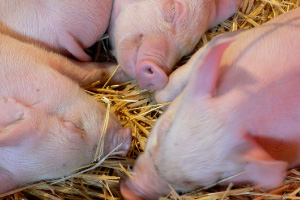
The NSW primary industries minister threatened to use biosecurity laws to prosecute animal activists. Animal activists just as much as farmers and other members of the community need to use good biosecurity practices.

An often fatal viral disease detected in domestic pigeons in Australia last year is here to stay and no one can tell what its impacts
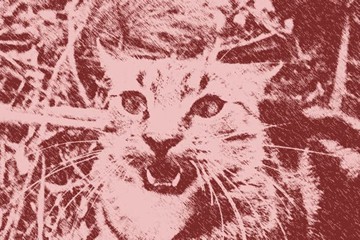
Do you know an individual or organisation who deserves recognition for their work protecting Australia from environmental weeds, diseases or pest animals?

Our Work Invasive species include pest animals like feral cats and foxes, introduced marine pests, weeds, diseases, fungi and parasites, as well as insects from

Australia faces an imminent threat from the deadly H5N1 highly pathogenic strain of avian influenza (aka. bird flu) that has killed millions of wild birds and tens of thousands of mammals globally.

In this submission we discuss the work of community action groups that are willing to perform biosecurity services, supporting the ACT government to achieve meaningful progress towards the goals articulated in strategies, and how to collaborate effectively to protect our biodiversity and enhance ecosystem resilience.

The risks of the high pathogenicity avian influenza (HPAI) arriving in Australia and causing mass mortality of native birds and mammals are likely to have increased.
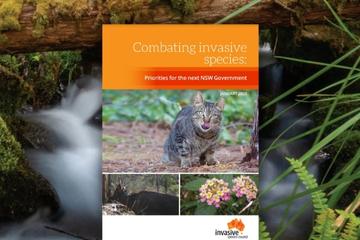
We face a crisis and current measures and resources in NSW are insufficient to halt and mitigate the impact of established invasive species and prevent the arrival and spread of new invasive species. In this document we detail priority actions the next NSW government can take that will strengthen the NSW biosecurity system and address priority environmental threats from invasive species.
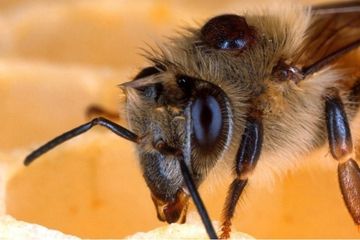
We support efforts to strengthen the national biosecurity system, with particular focus on prevention and early action to prevent detrimental impacts on the Australian environment from invasive plants, animals and diseases.
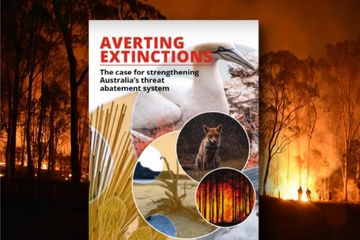
Australia was once a country where you could walk out at night and it was alive with wildlife scurrying and scrapping, digging and dashing. Australia’s nights are too quiet now.
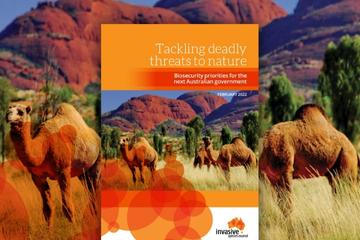
Initiatives and policies to improve Australia’s capacity to keep nature safe from new and established invasive species.

The introduction of cats to Australia has been a disaster not just for our wildlife, but has impacts on human health as well.

The Invasive Species Council supports the development of an interim national priority list of exotic environmental pests and diseases as the first step in developing a more comprehensive list of environmental biosecurity risks for Australia.

More than 5.7 million bats have died in North America since 2006 from white nose syndrome (WNS), a disease caused by the fungus Pseudogymnoascus destructans.

The NSW primary industries minister threatened to use biosecurity laws to prosecute animal activists. Animal activists just as much as farmers and other members of the community need to use good biosecurity practices.

An often fatal viral disease detected in domestic pigeons in Australia last year is here to stay and no one can tell what its impacts

Do you know an individual or organisation who deserves recognition for their work protecting Australia from environmental weeds, diseases or pest animals?

Our Work Invasive species include pest animals like feral cats and foxes, introduced marine pests, weeds, diseases, fungi and parasites, as well as insects from

Australia faces an imminent threat from the deadly H5N1 highly pathogenic strain of avian influenza (aka. bird flu) that has killed millions of wild birds and tens of thousands of mammals globally.

In this submission we discuss the work of community action groups that are willing to perform biosecurity services, supporting the ACT government to achieve meaningful progress towards the goals articulated in strategies, and how to collaborate effectively to protect our biodiversity and enhance ecosystem resilience.

The risks of the high pathogenicity avian influenza (HPAI) arriving in Australia and causing mass mortality of native birds and mammals are likely to have increased.

We face a crisis and current measures and resources in NSW are insufficient to halt and mitigate the impact of established invasive species and prevent the arrival and spread of new invasive species. In this document we detail priority actions the next NSW government can take that will strengthen the NSW biosecurity system and address priority environmental threats from invasive species.

We support efforts to strengthen the national biosecurity system, with particular focus on prevention and early action to prevent detrimental impacts on the Australian environment from invasive plants, animals and diseases.

Australia was once a country where you could walk out at night and it was alive with wildlife scurrying and scrapping, digging and dashing. Australia’s nights are too quiet now.

Initiatives and policies to improve Australia’s capacity to keep nature safe from new and established invasive species.

The introduction of cats to Australia has been a disaster not just for our wildlife, but has impacts on human health as well.

The Invasive Species Council supports the development of an interim national priority list of exotic environmental pests and diseases as the first step in developing a more comprehensive list of environmental biosecurity risks for Australia.

More than 5.7 million bats have died in North America since 2006 from white nose syndrome (WNS), a disease caused by the fungus Pseudogymnoascus destructans.

The NSW primary industries minister threatened to use biosecurity laws to prosecute animal activists. Animal activists just as much as farmers and other members of the community need to use good biosecurity practices.

An often fatal viral disease detected in domestic pigeons in Australia last year is here to stay and no one can tell what its impacts

Do you know an individual or organisation who deserves recognition for their work protecting Australia from environmental weeds, diseases or pest animals?

Our Work Invasive species include pest animals like feral cats and foxes, introduced marine pests, weeds, diseases, fungi and parasites, as well as insects from

Australia faces an imminent threat from the deadly H5N1 highly pathogenic strain of avian influenza (aka. bird flu) that has killed millions of wild birds and tens of thousands of mammals globally.

In this submission we discuss the work of community action groups that are willing to perform biosecurity services, supporting the ACT government to achieve meaningful progress towards the goals articulated in strategies, and how to collaborate effectively to protect our biodiversity and enhance ecosystem resilience.

The risks of the high pathogenicity avian influenza (HPAI) arriving in Australia and causing mass mortality of native birds and mammals are likely to have increased.

We face a crisis and current measures and resources in NSW are insufficient to halt and mitigate the impact of established invasive species and prevent the arrival and spread of new invasive species. In this document we detail priority actions the next NSW government can take that will strengthen the NSW biosecurity system and address priority environmental threats from invasive species.

We support efforts to strengthen the national biosecurity system, with particular focus on prevention and early action to prevent detrimental impacts on the Australian environment from invasive plants, animals and diseases.

Australia was once a country where you could walk out at night and it was alive with wildlife scurrying and scrapping, digging and dashing. Australia’s nights are too quiet now.

Initiatives and policies to improve Australia’s capacity to keep nature safe from new and established invasive species.

The introduction of cats to Australia has been a disaster not just for our wildlife, but has impacts on human health as well.

The Invasive Species Council supports the development of an interim national priority list of exotic environmental pests and diseases as the first step in developing a more comprehensive list of environmental biosecurity risks for Australia.
Get our blog the Feral Herald delivered to your inbox.
Our protected areas are being trashed, trampled, choked and polluted by an onslaught of invaders. Invasive species are already the overwhelming driver of our animal extinction rate, and are expected to cause 75 of the next 100 extinctions.
But you can help to turn this around and create a wildlife revival in Australia.
From numbats to night parrots, a tax-deductible donation today can help defend our wildlife against the threat of invasive weeds, predators, and diseases.
As the only national advocacy environment group dedicated to stopping this mega threat, your gift will make a big difference.
A silent crisis is unfolding across Australia. Every year, billions of native animals are hunted and killed by cats and foxes. Fire ants continue to spread and threaten human health. And the deadly strain of bird flu looms on the horizon. Your donation today will be used to put the invasive species threat in the media, make invasive species a government priority, ensure governments take rapid action to protect nature and our remarkable native wildlife from invasives-led extinction, death and destruction.
If you are having trouble submitting a form, please read this guide.
Please fill out the following form and one of our team will be in contact to assist as soon as possible. Please make sure to include any helpful information, such as the device you were using (computer, tablet or mobile phone) and if known, your browser (Mozilla Firefox, Chrome, Safari etc)
"*" indicates required fields
Dear Project Team,
[YOUR PERSONALISED MESSAGE WILL APPEAR HERE.]
I support the amendment to the Kosciuszko National Park Wild Horse Heritage Management Plan to allow our incredible National Parks staff to use aerial shooting as one method to rapidly reduce feral horse numbers. I want to see feral horse numbers urgently reduced in order to save the national park and our native wildlife that live there.
The current approach is not solving the problem. Feral horse numbers have rapidly increased in Kosciuszko National Park to around 18,000, a 30% jump in just the past 2 years. With the population so high, thousands of feral horses need to be removed annually to reduce numbers and stop our National Park becoming a horse paddock. Aerial shooting, undertaken humanely and safely by professionals using standard protocols, is the only way this can happen.
The government’s own management plan for feral horses states that ‘if undertaken in accordance with best practice, aerial shooting can have the lowest negative animal welfare impacts of all lethal control methods’.
This humane and effective practice is already used across Australia to manage hundreds of thousands of feral animals like horses, deer, pigs, and goats.
Trapping and rehoming of feral horses has been used in Kosciuszko National Park for well over a decade but has consistently failed to reduce the population, has delayed meaningful action and is expensive. There are too many feral horses in the Alps and not enough demand for rehoming for it to be relied upon for the reduction of the population.
Fertility control as a management tool is only effective for a small, geographically isolated, and accessible population of feral horses where the management outcome sought is to maintain the population at its current size. It is not a viable option to reduce the large and growing feral horse population in the vast and rugged terrain of Kosciuszko National Park.
Feral horses are trashing and trampling our sensitive alpine ecosystems and streams, causing the decline and extinction of native animals. The federal government’s Threatened Species Scientific Committee has stated that feral horses ‘may be the crucial factor that causes final extinction’ for 12 alpine species.
I recognise the sad reality that urgent and humane measures are necessary to urgently remove the horses or they will destroy the Snowies and the native wildlife that call the mountains home. I support a healthy national park where native species like the Corroboree Frog and Mountain Pygmy Possum can thrive.
Dear Project Team,
[YOUR PERSONALISED MESSAGE WILL APPEAR HERE.]
I support the amendment to the Kosciuszko National Park Wild Horse Heritage Management Plan to allow our incredible National Parks staff to use aerial shooting as one method to rapidly reduce feral horse numbers. I want to see feral horse numbers urgently reduced in order to save the national park and our native wildlife that live there.
The current approach is not solving the problem. Feral horse numbers have rapidly increased in Kosciuszko National Park to around 18,000, a 30% jump in just the past 2 years. With the population so high, thousands of feral horses need to be removed annually to reduce numbers and stop our National Park becoming a horse paddock. Aerial shooting, undertaken humanely and safely by professionals using standard protocols, is the only way this can happen.
The government’s own management plan for feral horses states that ‘if undertaken in accordance with best practice, aerial shooting can have the lowest negative animal welfare impacts of all lethal control methods’.
This humane and effective practice is already used across Australia to manage hundreds of thousands of feral animals like horses, deer, pigs, and goats.
Trapping and rehoming of feral horses has been used in Kosciuszko National Park for well over a decade but has consistently failed to reduce the population, has delayed meaningful action and is expensive. There are too many feral horses in the Alps and not enough demand for rehoming for it to be relied upon for the reduction of the population.
Fertility control as a management tool is only effective for a small, geographically isolated, and accessible population of feral horses where the management outcome sought is to maintain the population at its current size. It is not a viable option to reduce the large and growing feral horse population in the vast and rugged terrain of Kosciuszko National Park.
Feral horses are trashing and trampling our sensitive alpine ecosystems and streams, causing the decline and extinction of native animals. The federal government’s Threatened Species Scientific Committee has stated that feral horses ‘may be the crucial factor that causes final extinction’ for 12 alpine species.
I recognise the sad reality that urgent and humane measures are necessary to urgently remove the horses or they will destroy the Snowies and the native wildlife that call the mountains home. I support a healthy national park where native species like the Corroboree Frog and Mountain Pygmy Possum can thrive.